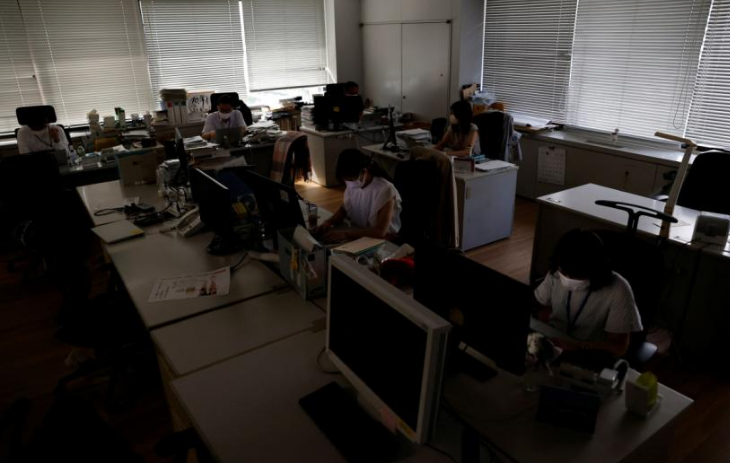[Circle depth] It is not so easy to return from Mars sampling
Author:Global Times Time:2022.07.04
[Global Times Special Reporter Chenyang] Recently, news about "China will return to Mars in 2031" has received great attention from foreign media. The Eurasian Times in India also contacted it to "Sino -U.S. Mars Competition." However, it is generally acknowledged that it is not easy to return from Mars and face various unexpected challenges at any time.

Those bitter things to collect Martian rock samples
India's "Eurasian Times" said on July 2 that China recently announced that Tianwen No. 1 Mars probe has completed its scheduled mission. The report noticed that Sun Zezhou, the person in charge of the Tianwen No. 1 project, also revealed China's next Mars detection plan to prepare to perform two launch tasks at the end of 2028, and brought Mars sample back to Earth in July 2031. "China will become the first country in the world to achieve Mars sampling, which is two years earlier than the United States and the European Union."
According to the US "Space" website, compared to the US Aerospace Administration (NASA) and the European Air Administration's Mars sampling back to the joint project, China's similar Mars detection plan is simpler, and there is no step in the Symphony car to sample different places. It is reported that China has a successful experience returned from the moon. The Chang'e 5 detector landed on the moon in December 2020, and then returned to the earth to the earth's first batch of lunar samples since the Soviet "Moon 24" detector in 1976.
However, the "Space" website emphasized that human beings are currently facing many technical problems to return from Mars. Although both China and the United States have successfully dispatched detectors in Mars and launching scientific investigations in Mars, this has only completed the first step in returning Mars sampling.
On the 2nd, the website also introduced the difficulties encountered when the US "Perseverance" Mars car encountered when collecting rock samples in Mars. It is currently collecting rock samples in the River Delta region of the Mars Jezuro meteorite. According to NASA's statement, scientists believe that if there was life on this red planet, then the region may contain traces left by the ancient creatures of Mars hundreds of millions of years ago. However, NASA recently acknowledged on the Twitter account of the "perseverance": "The rocks of the ancient river Delta are amazing, but so far, no rock is suitable for sampling. Some rocks are too fragile and some are uneven. "
It is reported that the sedimentary rock formed by the impact of water flow is most likely to hide the line of life of Mars, but it is a very difficult challenge to choose a rock that is suitable for sampling. The "perseverance" is equipped with a mechanical drill, which can be closed in the sample tube, but sometimes only the core process of the core may cause the rock sample to rupture or even break. In fact, when the "perseverance" selects the sampling area, the shape and sampling angle of the rock must be considered, otherwise they cannot drill. At present, it encounters such troubles -scientists have chosen a layer -like rock called "Betty", which is located at the bottom of the Delta and consists of alternate coarse grains and fine particles. Well, the ranging rock layers and shapes of "Betty" make Mars cars unable to drill safely. NASA scientists are forced to choose another rock, but it may take a few days to confirm whether it is sampled.
Due to the limited understanding of Mars on the surface of Mars, Martian detectors have encountered difficulties in Mars many times when drilling or sampling. Earlier NASA's "Insight" lander tried to make holes in Mars, but the hard level of the surface exceeded the drilling ability of the detector, so that its work on Mars was paused. When the "perseverance" Mars car was sampled for the first time in Mars in 2021, although the drilling hole was successful and all the equipment was operating normally, because the strength of the rocks selected was too soft, it was impossible to collect rock core samples. end. According to the plan, the "perseverance" will eventually collect 36 sample tubes equipped with Mars rocks and wait for them to return them back to Earth.
Use the "two -kick" mode to launch the rocket from Mars
After collecting enough Martian rock samples, how to successfully transport them back to the earth is another problem. According to the "Scientific American" website, NASA has signed a contract worth $ 194 million with the United States Luo Ma Company to build a 3 -meter -long Mars rising aircraft (MAV). The rock sample collected by the "perseverance" is sent to the Mars orbit. This will create a series of "first time" of human history.
Chris Chatelier of NASA Jet Promotion Lab is the chief engineer of the Mars launch system. He said that this will be the first time that human beings have launched rockets on another planet outside the earth, and MAV must overcome multiple challenges. "The gravity of Mars is only 1/3 of the earth, and its thin atmospheric density is only 1/100 of the earth. Therefore, the launching rocket from Mars is completely different from the launch of the rocket from the earth, and it is different from the asteroid from almost no gravity and air. The detector. "He also emphasized that Mars is tens of millions of kilometers from the earth, and the take -off process of MAV must be completely carried out.
According to the plan, MAV will be launched with a landor from 2026 to 2028. After 28 months of long journey, it will land on Mars in summer. Diff Morro, the head of Luo Ma Company's deep space, said: "The spacecraft needs to reach Mars in the appropriate season, so that you will not encounter sandstorms."
The most critical part is here. After MAV arrives at Mars, how do you lift off from the surface of Mars? "Our original idea was to launch," the first idea was to allow the rocket to take off vertically from the landing platform. " But the latter increases the extra weight and cannot meet the needs of Mars detection tasks. According to Chatlier, the current solution is similar to "two -kick", that is, the rocket first ejected the speed at a speed of 5 meters per second. After 1 second, the MAV ignited the engine and sent the sample compartment of the basketball size to the sample compartment. To about 400 kilometers high. Since then, the spacecraft manufactured by the European Air Bureau will enter the Mars orbit, recycle the sample compartment and start the trip to the earth. Over the past two years, the jet promotion laboratory team has completed 23 simulation ejection tests, which proves its feasibility.
Does Mars Sample threat to Earth's safety?
Even if it overcome many difficulties to bring the Mars specimen back to the Earth's orbit, how to make it safely return to the earth, still facing many technical problems. Especially whether these "uninterrupted samples" will pose a threat to the security of the earth, it has caused a lot of controversy.
The US "Philadelphia Inquirener" said that scientists hope to bring 36 Mars rock samples with a total weight of about 1 pound back to a highly safe laboratory to find signs of ancient microorganisms in Mars, and prepare for people to set foot on this red planet one day to prepare for people to prepare for this red planet. Essence NASA said that all measures are taking all measures to prevent any pollution of the earth. "The sample management itself will not be disinfected, but the container stored in space will be disinfected in space and completely closed through thermal welding until they open in the laboratory." Related laboratories are similar to a biological laboratory that studies highly infectious pathogens, with multi -stage purification procedures, air filtration systems and other guarantee measures.
It is reported that although NASA believes that the environment and safety risk of recycling Martian rock samples are "extremely low", "not everyone agrees with it." At the beginning of this year, NASA received about 170 feedback when he sought public opinion, most of which held a negative attitude. Some people oppose, "We don't know if these samples are sterile. If we want to bring something back to the earth, no matter whether they are sterile or not, we should do some rough tests to see if there are other creatures." Also Some people ask why you can't send Mars sample to the International Space Station for inspection first.
NASA said that these rock samples are very likely to have a low possibility of Mars life, because the current Mars is very cold, dry and high -intensive radiation, which is "unsuitable for survival" for creatures. In addition, the International Space Station, which is expected to be retired in 2031, does not perform precision equipment required for related testing. As for the sterilization of samples, NASA explicitly opposed it because this may destroy valuable information, such as the traces of the existence of Mars life in the past.
The German Science and Technology Magazine "Spectrum" states that the famous celestial biologist Steven Benner supports NASA's decision. He said, "I don't think it is necessary to discuss with Mars samples to our planet." The earth landed on the earth. If Mars microorganisms exist and can cause severe damage to the biosphere of the earth, then it has already happened. "
- END -
Russian Defense Minister: Expand Actions in all directions

Based on today's Russian television station, Russian satellite network and other m...
Breaking the 150 records, Japan urged 37 million people to "turn off the lights"

According to Reuters on the 28th, on Tuesday, Japan was baked at high temperatures...